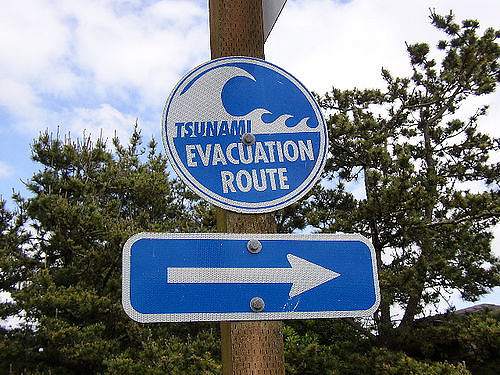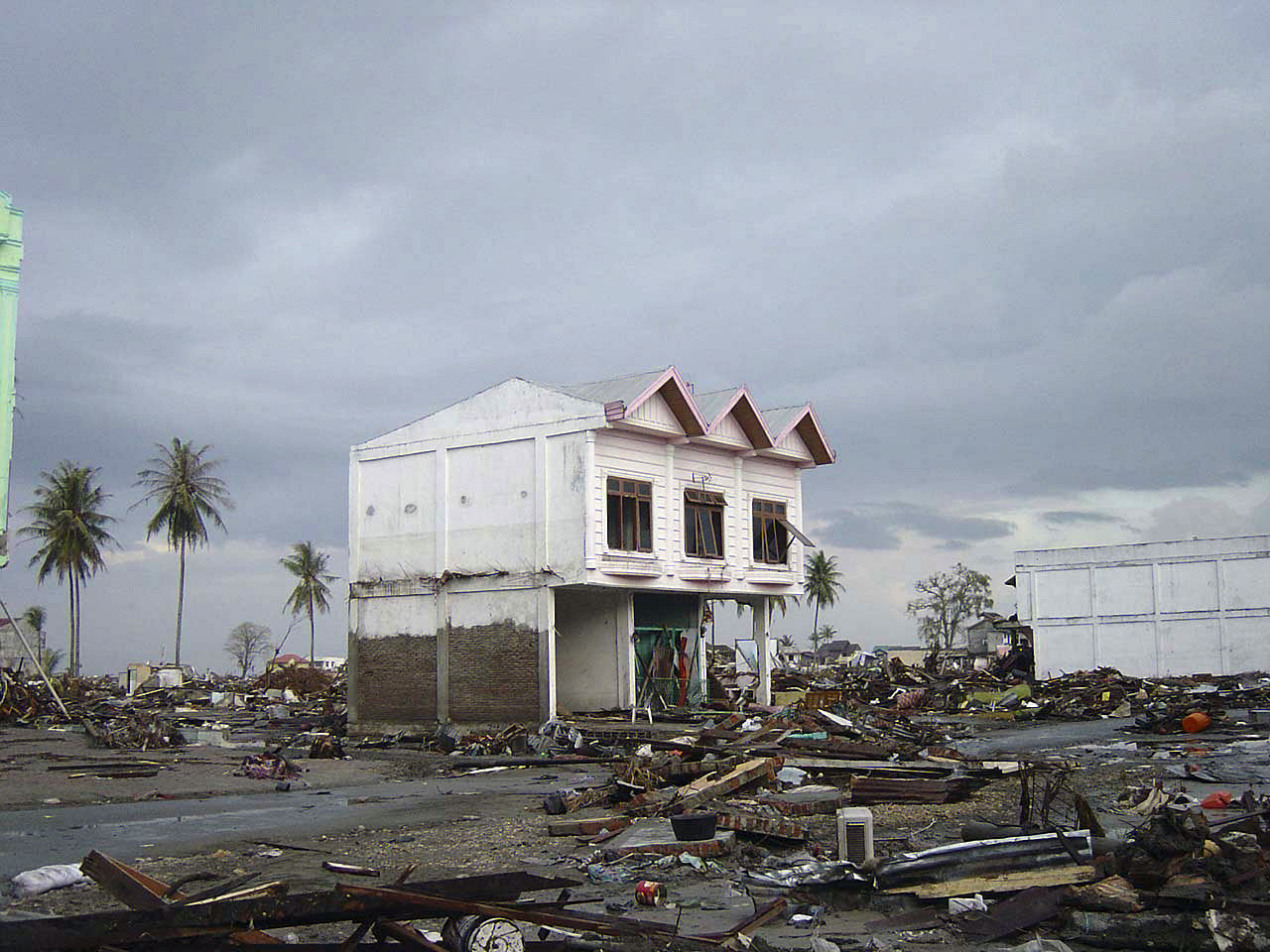
A tsunami is classified as a low-frequency and high-impact natural hazard. The ones occurred in 2004 (Indian Ocean) and 2011 (Japan) give us an idea on of much this event can be devastating, both in terms of economic losses and deaths: the Boxing Day Tsunami of 2004 alone involved 14 countries and caused more than 230.000 deaths.
Be informed: it is crucial
Tsunamis are usually generated by underwater earthquakes (but may be generated also by vulcanic eruptions or  explosions), which cause a displacement of a significant volume of land. This movement causes the displacement of a huge volume of water, that reaches the shores in form of one or more large tidal waves. An underwater earthquakes does not generate a tsunami all the times, but when this happens (and when the tidal wave has enough strenght), the effects are often distruptive and deadly.
explosions), which cause a displacement of a significant volume of land. This movement causes the displacement of a huge volume of water, that reaches the shores in form of one or more large tidal waves. An underwater earthquakes does not generate a tsunami all the times, but when this happens (and when the tidal wave has enough strenght), the effects are often distruptive and deadly.
The earthquake-tsunami cause-effect relation has a bright side: it is possible to foresee if a tsunami is generated, its waves height and the ETA on a selected area. This is possible thanks to the modern and efficient monitoring systems that are placed in specific areas: these systems monitor the sea, and alert national authorities in case a tsunami is moving toward them. An example of such systems is the one put in place by the PTWC (Pacific Tsunami Warning Center), which monitor the Pacific Ocean.
A geography lesson can save your life
Some events may work as a natural alarm of a tsunami: to know these signals may save your life and that of people near you. On 26 December 2004, Tilly Smith, a 10 yo English girl, was on holiday at Maikhao Beach (Thailand). A few days before departing, her geography teacher had a lesson on tsunamis, their behaviour and their characteristics. When Tilly saw the water receding from the shoreline and frothing bubbles on the surface of the sea, she alerted her parents, which informed other perople and the hotel staff. The shore was evacuated before the tide arrived at the beach, and Maikhao was one of the few beaches where no death was registered.

A survey revealed that in Aceh (Indonesia), 88% of the people had never heard about tsunamis before the Boxing Day event. Without information there is no preparation: Aceh was one of the most affected areas in terms of tidal strenght and death count (the photo on the left shows the impact of the tsunami in Aceh).
A single lesson of geography, captured by a 10 yo girl, was capable of saving the life of a number of people, while the lack of information (mostly from the authorities, which did not have a monitoring and warning system) caused the death of thousands: this is the reason why to be informed and prepared is not only important, but crucial.
After the 2004 events authorities from all over the world started to install monitoring and warning systems, and to inform the population about the risks and the actions to take in case of a tsunami. In case of lack of information from authorities, or if the information is late, it can be really helpful to know the signals that may anticipate the arrival of a tsunami (as Tilly Smith did in 2004).
The signals
- A strong or long earthquake
- A loud roar (like a train or an airplane) from the ocean
- Unusual ocean behavior (the ocean could look likea fast-rising flood or a wall of water or it could drainaway suddenly like a very low, low tide)
Source: Tsunami Awareness & Safety, National Tsunami Hazard Mitigation Program
What to do
If you are in a tsunami hazard zone and receive an official warning:
- Stay out of the water and away from beaches and waterways.
- Get more information from radio, television, or your mobile device (text or data).
- If officials ask you to evacuate, move quickly to a safe place. Follow evacuation signs or go as high or far inland (away from the water) as possible.
Source: Tsunami Awareness & Safety, National Tsunami Hazard Mitigation Program
Tsunami Awareness Day
UNISDR (United Nations International Strategy for Disaster Reduction), in December 2015, declared 5 November as the Tsunami Awareness Day. This year the tradition continued, and 5 November 2017 was the Awareness Day: events, public information, protecting lives.
The website of the event, http://www.unisdr.org/2017/tsunamiday, provides resources, information and events related to the Tsunami Day.
Events
UNISDR and other authorities organised information days and workshops for citizens and experts in the days near the 5 November (including the following days). The list of the activities is available at the specific Preventionweb page (click here).
IES
IES Solutions always made its part in disaster riduction, focussing on the importance of an efficient information exchange between authorities and towards the citizens. In 2014 IES participated to NEAMWave 14, a series of exercises organised by Intergovernmental Oceanographic Commission of UNESCO (IOC/UNESCO) with the aim of improving the emergency communication and the public alerting in case of a tsunami.
Currently, IES is involved in GRALLE, the Galileo-based alerting system that will be capable of alerting the population and give instructions in case of an emergency.
Learn more
Visit the website http://www.unisdr.org/2017/tsunamiday




